8. Violence Jack: Evil Town (Ichiro Itano, 1988)
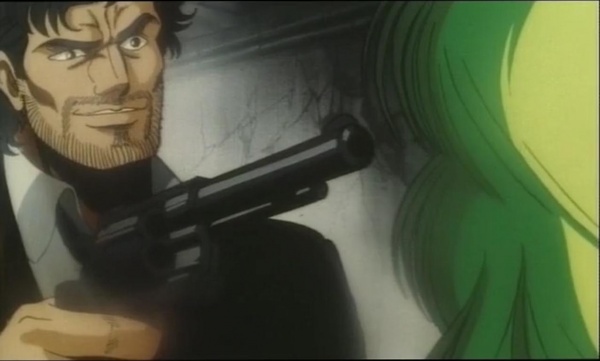
The most controversial among the series’ OVAs, “Evil Town” incorporates a number of elements that border on misanthropic, including rape, necrophilia and cannibalism.
The Kanto part of Tokyo has submerged underground after a series of major earthquakes, and is completely sealed off from the rest of the city. The survivors have been split in three “regions”. Section A has all the businessmen and white-collars in general, who are trying to establish some sort of order. Section B has all the criminals and sociopaths, while Mad Saurus and his assistant Blue rule. Section C is only comprised of models who have been trapped on a train. Jack emerges in the last section and decides to help the women against the other two sections.
The story in here is just an excuse for all the sex and violence, with Jack himself being the zenith of this tendency, as he barely even speaks. In this truly trash setting, though, the animation is quite good and colorful in all its splatter glory.
7. Akira (Katsuhiro Otomo, 1988)
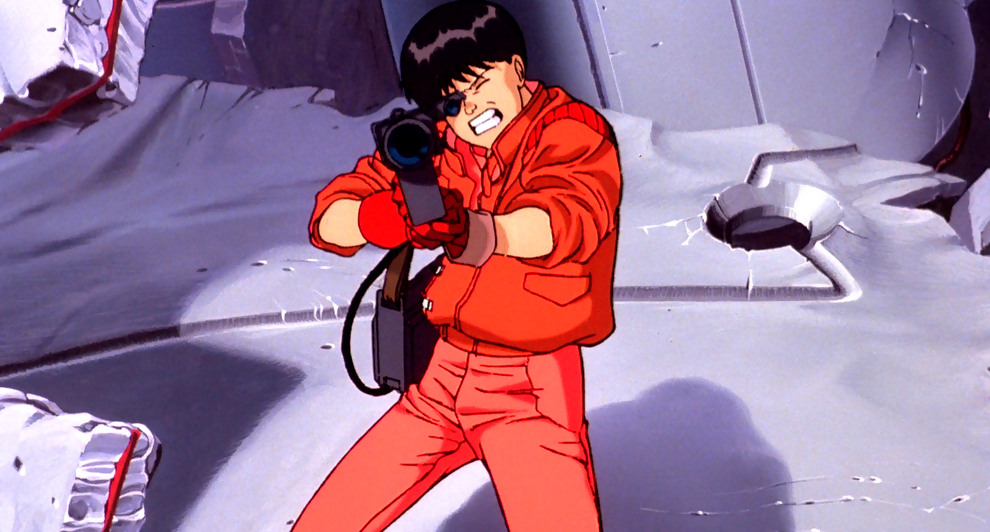
Katsuhiro Otomo’s magnum opus, based on his own manga that stretches for more than 2,000 pages, is one of the landmarks of the genre, being universally acclaimed and having garnered a large cult following. Neo-Tokyo is a post-apocalyptic megalopolis that was built near the remains of the old city, which was destroyed during World War 3 by a nuclear attack. There, a motorcycle punk gang headed by Kaneda is in constant fights with another gang, whose members call themselves “Clowns”.
Unfortunately, Kaneda and his comrades find themselves in the wrong place at the wrong time, in an incident that includes government officials and some mysterious creatures. Furthermore, the government later arrests Tetsuo, a member of the gang. The film is the epitome of post-apocalypse, one of the genre’s most cherished themes.
Otomo describes a dystopian reality where gang wars, criminality, abandonment, fear and death synthesize the environment of a decaying metropolis. Completely hand-drawn, “Akira” is nevertheless an audiovisual masterpiece, incorporating exquisite animation and a vast palette of colors to depict the futuristic and industrial environment of Neo-Tokyo.
6. Urotsukidoji: Legend of the Overfiend (Hideki Takayama, 1989)
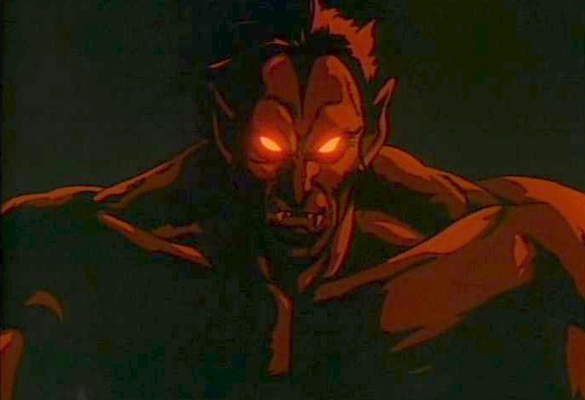
“Urotsukidoji” is another notorious title, as Hideki Takayama took the cult manga of Toshio Maeda and added violence, sex, sadism and the combination of the three, creating a truly extreme anime that was only allowed to screen outside of Japan after a number of scenes were cut, which amounted to 45 minutes.
The world in which the story takes place consists of three realms: the one of humans, the one of Demons and the one of Man-Beasts. A prophecy states that a being of unimaginable power, named the Overfiend, will arrive and unite the three realms into a land of eternity.
In this setting, man-beast Amano Jyaku, his sister Megumi and their strange companion Kuroko have been searching for the Overfiend for 300 years. Eventually, their search leads them to high school in Osaka, where they find two likely candidates: shy and lecherous Nagumo and school ideal Akemi. As the two siblings investigate further, though, they realize that the prophecy is not what they thought it was.
Chaos, sex, violence, gore, and battles among monsters are the main ingredients of a title many have described as despicable, in an anime that has been hailed as the most recognized adult anime in the world.
5. Midori (Hiroshi Harada, 1992)
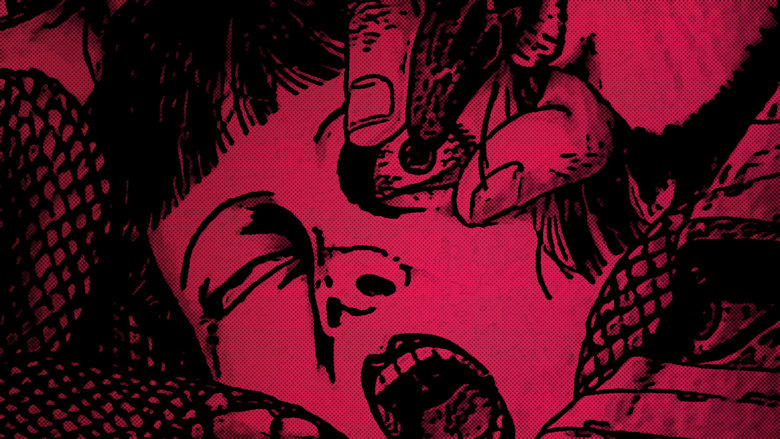
Another notorious title, “Midori” is considered partially lost, since it was banned outside of Japan, due to themes and images considered illegal at the time. Unsurprisingly, Harada could not find any sponsors for its production, and had to use all his life savings to the make the film in five years, ending up with 5,000 separate, hand-drawn sheets of animation in the style of ero-guro.
The script is based on “Shojo Tsubaki”, a manga by Suehiro Maruo, and focuses on Midori, a girl who becomes an orphan after losing her mother, and ends up selling camellias on the street to make a living. Eventually, she is approached by a man who persuades her to follow him to his circus. While there, Midori is harassed, abused and humiliated by the members of the freak show, until a dwarf-magician appears.
Filled with gruesome and erotic imagery taken to extremes, “Midori” is also a story of absurd love. The anime highlights its low budget, while some footage that has been cut or lost results in many abrupt jumps and cuts, which, however, intensify the cult nature of the title.
4. Ninja Scroll (Yoshiaki Kawajiri, 1993)
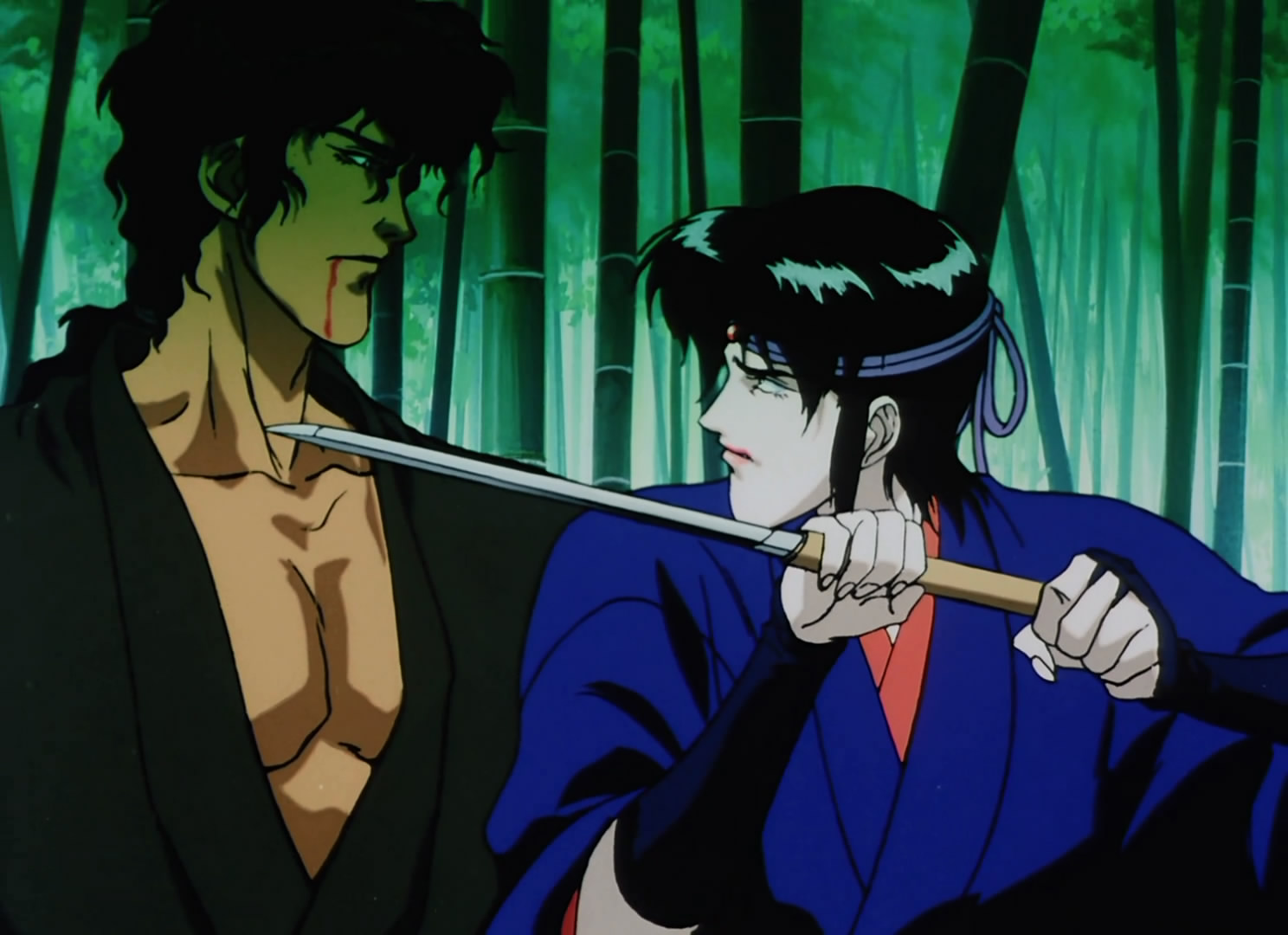
A team of ninjas arrives at a village to investigate an epidemic that killed all of its inhabitants. However, they find themselves ambushed by a monster and end up dead except for a female that the monster takes captive. Juubei, a masterless samurai, saves her but ends up in the middle of a larger case, which results in him having to fight the Eight Demons of Kimon.
Yoshiaki Kawajiri directed an impressive anime that separates itself from the mass of similar titles due to its elaborate script, interesting though perverse characters, astonishing battles, and very graphic depiction of violence, even sexual violence. Furthermore, the animation, which also includes some Western elements, is fast, fluid and overall splendid, although in a title that is exclusively addressed at adults.
3. Ghost in the Shell (Mamoru Oshii, 1995)
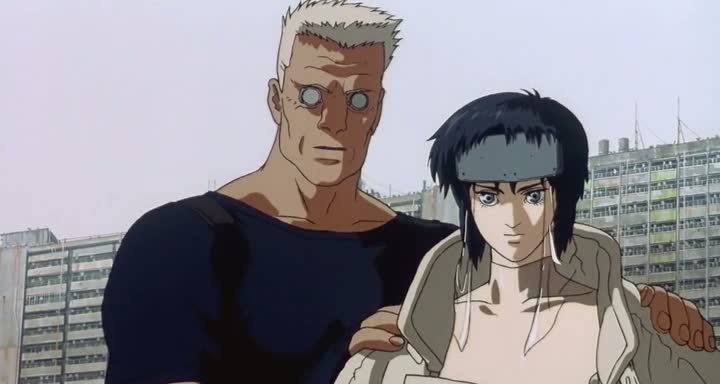
Based on the homonymous manga by Masamune Shirow, “Ghost in the Shell” established cyberpunk as one of the main themes of the genre. The anime takes place in 2029, when the world is connected through a vast electronic network that has access to all aspects of life. Motoko Kusanagi is a highly evolved cyborg who works for Public Security Section 9.
Along with her team of experts, she is on the hunt for the “Puppet Master”, a genius hacker whose alleged purpose is to stand against the contemporary oppressive society and its absolute dependence on the aforementioned network.
“Ghost in the Shell” is another anime that chiefly addresses adult audiences, not only due to the graphic depiction of violence and nudity, but also due to its complicated sociopolitical and philosophical context. In that fashion, underneath the techno-action hides an effort to discern the meaning of life through the vast spread of technology, as much as themes of racism and politics in general.
This anime spawned a huge franchise that continues to produce masterpieces. Moreover, it was a trademark of the industry in both its themes and technological advancement, involving a number of pioneering animation processes.
The scene where a naked Major Kusanagi jumps toward the bottom of a building upside down, and murders her target through the window of the apartment, is one of the trademarks of the industry.
2. Perfect Blue (Satoshi Kon, 1997)
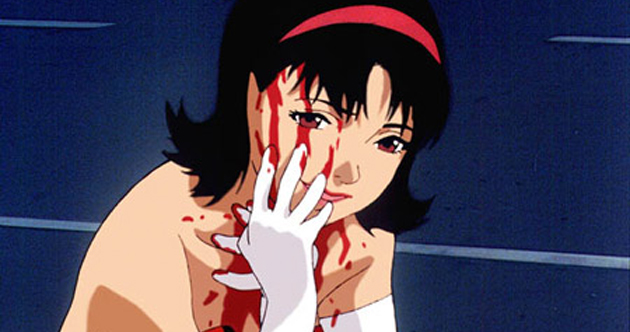
“Perfect Blue” was initially meant to be a live-action TV series, but after the Kobe earthquake in 1995, the production studio suffered extensive damages resulting in budget cuts, up to a point that solely allowed the shooting of an OVA. Nevertheless, even though the shootings were roughly half-completed, Madhouse decided to distribute it as a feature film.
Mima Kirigoe, a member of the largely popular J-pop band Cham, announces during a concert that this will be the last performance of the band, since she has decided to pursue an acting career.
The announcement creates chain reactions in Mima’s life, as much as in the lives of the people close to her. A number of her fans become frustrated, regarding her decision as a betrayal toward them, mostly by a known stalker of hers named Me-mania.
In the meantime, she discovers a blog depicting details of her everyday life, which no one aside from her could experience. Additionally, the blog is updated on a daily basis, presumably by her. She discusses the issue with her manager, who soothes her for the time being; however, as she delves into the blog, she begins to lose her touch with reality.
Furthermore, someone is murdering certain individuals who had helped her with her career. Moreover, she is constantly discovering elements that incriminate her.
Satoshi Kon focuses on the association between reality and presumed reality, using the archetype of the pop idol as an example. The actual personality of the artist is in contrast to the personality the fans witness, which is the one that becomes apparent on stage.
According to Kon, cinema can undermine reality, revolting against the human mind that almost exclusively receives images from the actual environment. The question he presents is clear: why should an image emerging from facts in the material world be truer than one emerging from the human mind? Kon’s Weltanschauung, which is present in all of his films, resides upon this particular questioning.
1. Metropolis (Rintaro, 2001)
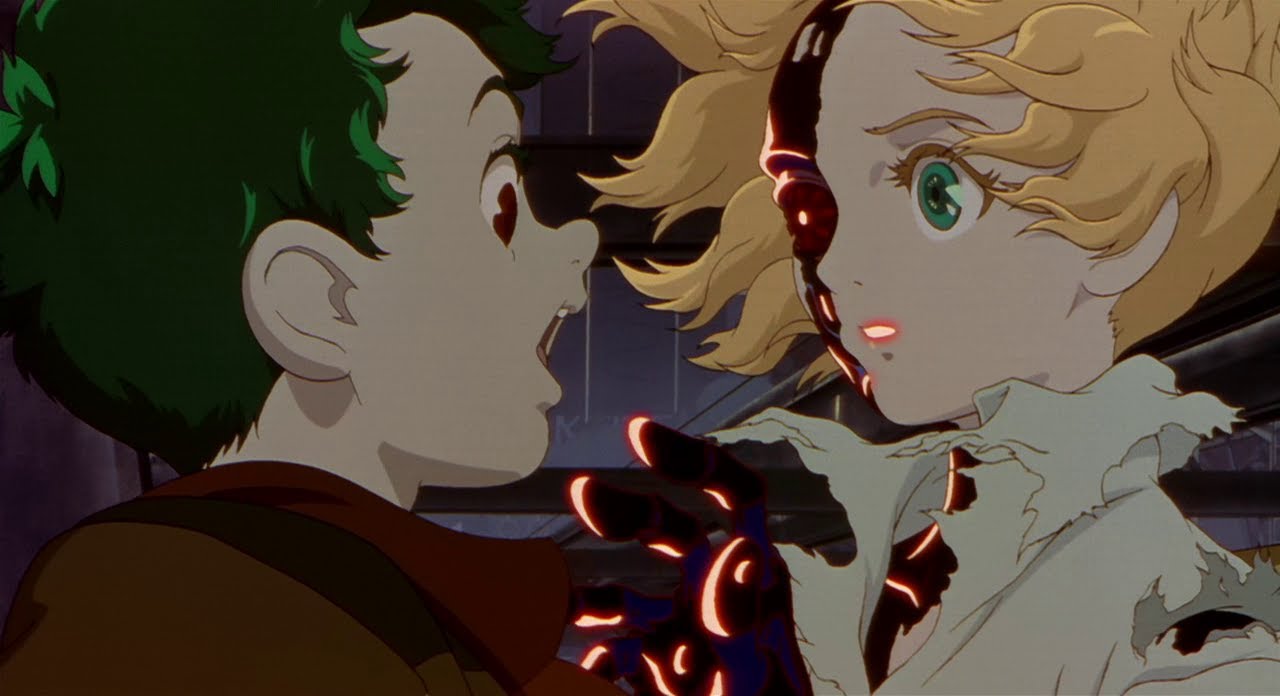
Based on the classic manga by Osamu Tezuka, itself inspired by the homonymous 1927 German silent film by Fritz Lang, and featuring a script by the anime legend Katsuhiro Otomo (“Akira”), direction by Tezuka’s collaborator, Rintaro (“Astro Boy”), and animation by Madhouse, “Metropolis” had all the tools for becoming a masterpiece. In that fashion, it succeeded to the fullest, taking advantage of its huge budget ($15 million) in the best way possible.
Metropolis is an industrial, tri-level city where robots and humans co-exist, although the former are discriminated (they cannot even have a human name, resorting in codes to name themselves) and segregated to the lower levels. Duke Red is a paramilitary leader with ties to the government and a plan to create the most perfect robot of all, in the image of his deceased daughter, Tima. Furthermore, he has just erected a massive skyscraper called the Ziggurat, which he claims will allow humanity to extend its power across the planet. In order to achieve his first goal, he has hired Dr. Laughton, a shady scientist who is wanted for organ trafficking.
Japanese private detective Shunsaku Ban and his nephew Kenichi travel to Metropolis to arrest Dr. Laughton, but after an explosion in his lab, caused by Duke Red’s adopted son, Rock, who is jealous of Tima, the two are separated, and Kenichi ends up with Tima.
Rock is also the leader of Marduk, a vigilante group whose supposed purpose is to calm anti-robot sentiments. Rock continues to hunt Tima and Kenichi, who are forced to seek refuge in the lower levels of the city, where they meet Atlas and his group of unemployed workers who are plotting to have a revolution. However, when this revolution breaks out, everyone seems to want to use it for their own purpose.
Rintaro directs an intricate anime, which uses the plethora of its main characters to present a number of sociopolitical allegories and metaphors. The most obvious one regards the way the government uses the military power of the right-wing groups for its purposes, but eventually this group (in this case, Duke Red and the Marduk) takes power in its hands, overthrowing the legitimate government and establishing a dictatorship. The fact that the labor force is also misguided into revolting and eventually betrayed is another metaphor of the way governments occasionally use the proletariat.
Both of the aforementioned concepts have a distinct connection to the events that unfolded in Weimar Germany, who witnessed the horrors and the aftermath of the First World War, only to plunge again into a political chaos that eventually brought Hitler and the Nazis to the fore. Issues of racism and discrimination are also included and represented by the concept and the situation of the robots.
Author Bio: Panos Kotzathanasis is a film critic who focuses on the cinema of East Asia. He enjoys films from all genres, although he is a big fan of exploitation. You can follow him on Facebook or Twitter.